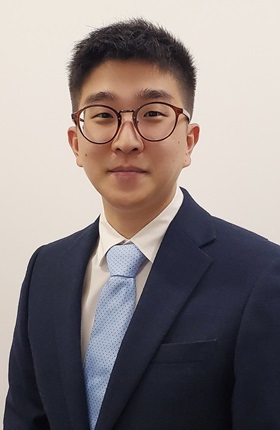
- GH029
- +852 2766 4821
- bs.kang@polyu.edu.hk
Biography
Dr Jeremy Kang earned a bachelor’s degree in Visual Optics from Kyungwoon University in South Korea in 2014. He subsequently obtained a PhD in Optometry from The Hong Kong Polytechnic University in 2021, in which his research focused on investigating corneal biomechanical and molecular changes during the development of high myopia in chickens. Following the completion of his PhD, Dr Kang joined the Centre for Eye and Vision Research as a postdoctoral fellow, focusing on developing high myopia model for corneal abnormal changes. During this time, he coordinated projects exploring the role of corneal mechanobiology in refractive development in chickens.
Research Overview
Dr Kang’s primary research interest is the role of corneal mechanobiology in refractive development. While corneal biomechanics measurements have become a routine clinical practice, the influence of corneal biomechanics on corneal structures and refractive development remains largely unknown. To achieve a deeper understanding of corneal mechanobiology, Dr Kang has employed a non-invasive corneal biomechanics technique and utilized a cutting-edge proteomics approach on a novel animal model with altered corneal biomechanics. This research aimed to elucidate the relationship between corneal biomechanics and refractive development, with an ultimate goal of enhancing vision.
Education and Academic Qualifications
- Bachelor of Public Health in Visual Optics, Kyungwoon University
- Doctor of Philosophy in Optometry, The Hong Kong Polytechnic University
Professional Qualifications
- Licensed Optician (South Korea)
Research Interests
Research Output
1. Kang BS, Leung TW, Vyas SA, Ayerakwah PA, Lin JC, Liang YY, Stell WK, Kee CS. Synchronous high myopia development induced by bilaterally form deprivation in chicks. Experimental Eye Research. In Press Jan 2024.
2. Kwok HY, Kwok HY, Ng TN, Leung TW, Kang BS, Kee CS. Characteristics of ciliary muscle profile in high myopes measured by swept-source anterior segment optical coherence tomography. Plos One. 2023. 18(11):e0289135.
3. Xin Y, Kang BS, Zheng YP, Shan SW, Kee CS, Tan YH. Biophysical properties of corneal cells reflect high myopia progression. Biophysical Journal. 2021 17;120(16):3498-3507
4. Kang BS, Lam TC, Cheung KWJ, Li KK, Kee C. Corneal proteome and differentially expressed corneal proteins in highly myopic chicks using a label-free SWATH-MS quantification approach. Scientific Reports. 2021,11:5495.
5. Kang BS, Wang LK, Zheng YP, Guggenheim JA, Stell WK & Kee C. High myopia induced by form deprivation is associated with altered corneal biomechanical properties in chicks. PloS one. 2018, 13(11):e0207189.



